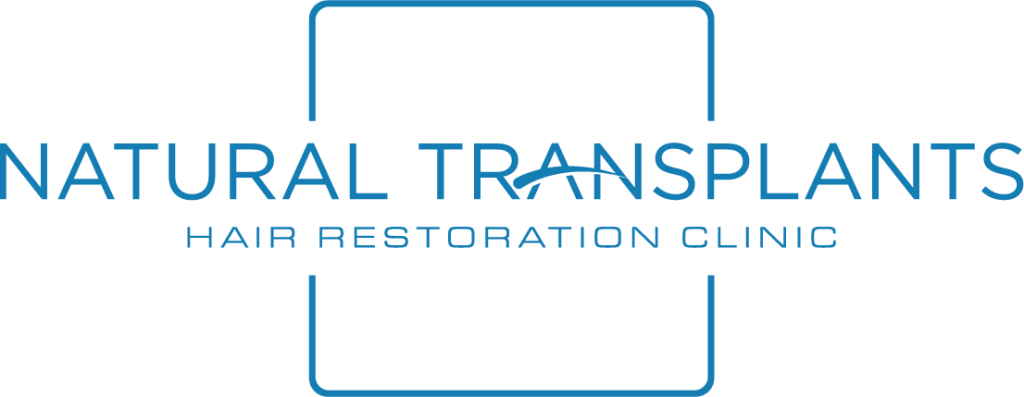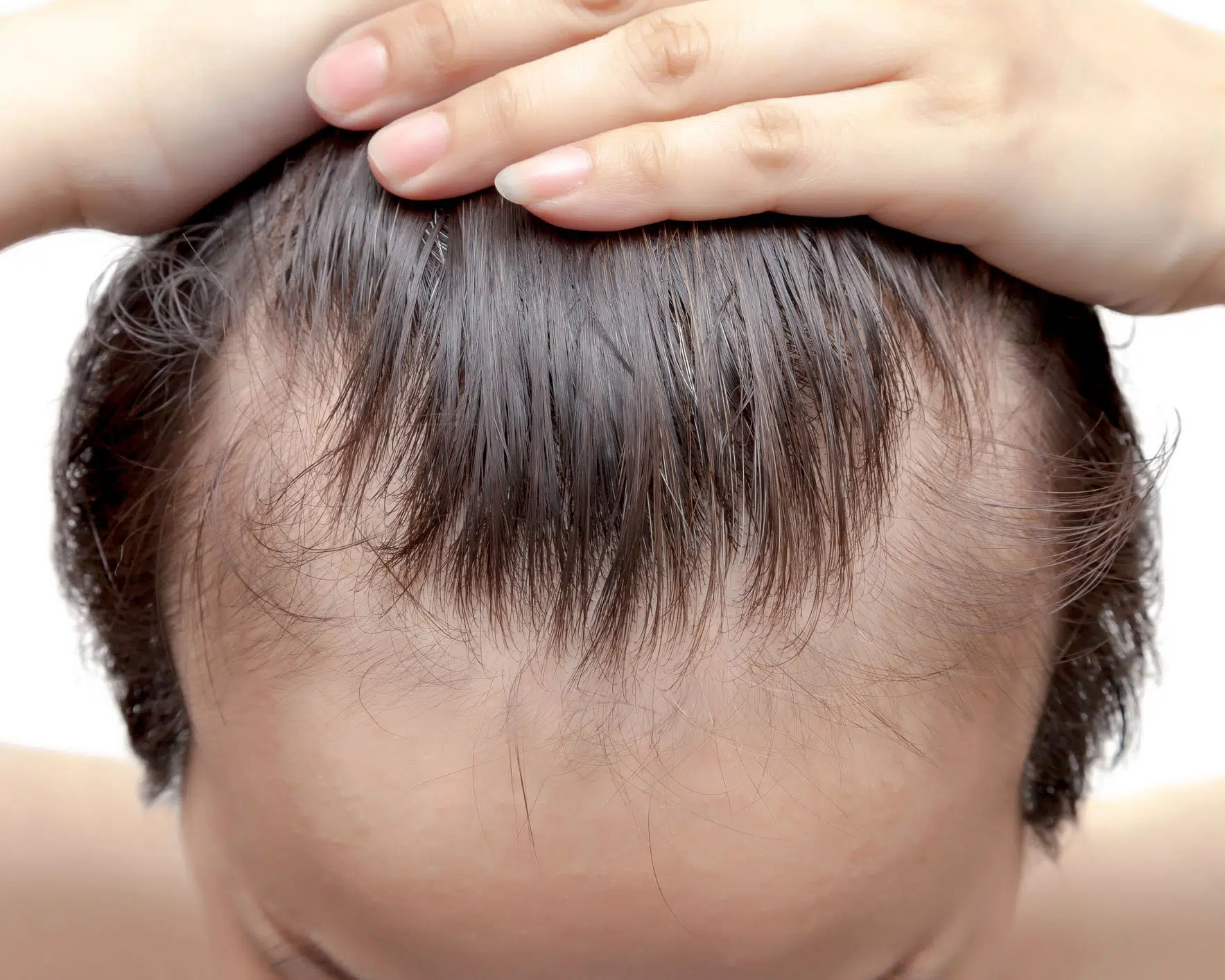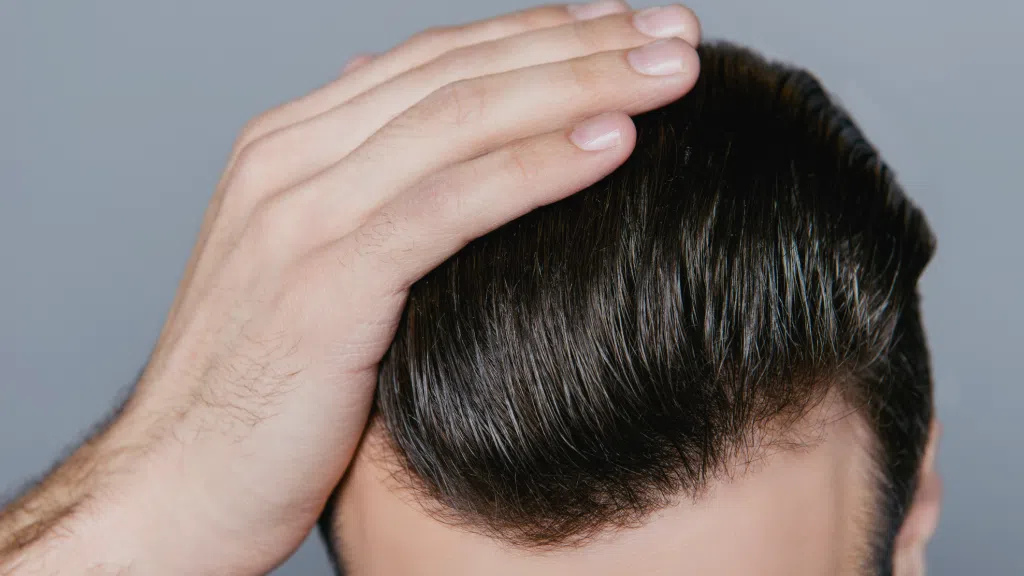Have you looked in the mirror and noticed a receding hairline? Even though losing hair is a natural part of the aging process, it can still be distressing for many people. If you’re looking for ways to stop this from happening, here is everything you need to know about preventing a receding hairline:
What Is a Receding Hairline?
A receding hairline refers to the thinning or loss of hair at the front and top of the scalp, starting at the temple. The hairline gradually thins and moves backward, often forming a more pronounced “M” shape across the scalp. There are many factors that can cause this, and while it commonly occurs in men, it can also occur in women.
Why This May Be Happening
Genetics and aging are the two main culprits of a receding hairline.
Some people simply have a genetic predisposition to hair loss. Male pattern baldness and or female pattern baldness are both linked to a hormone called dihydrotestosterone, or DHT. When DHT levels rise, the hair follicles shrivel, causing increasingly thinner hair to grow out of them.
Age is another factor that can affect our hairline. The hairline tends to mature around ages 25-27. However, some may notice the start of a receding hairline in their early to mid-20s.
For women in their 40s, menopause is a significant factor. As estrogen levels go down, women may experience hair loss or thinning hair.
Signs of a Receding Hairline
Here are five signs of a receding hairline:
- Higher hairline: You’ve recently noticed your hairline is higher
- Your hair is falling out: if you notice hair falling out on your pillow, in the shower, or otherwise, it could be a sign of a thinning hairline.
- M-Shape Pattern: When a receding hairline occurs, one sign that usually occurs is the development of an “M-shaped” pattern on your scalp.
- Thinning hair: Your scalp is becoming more visible through your hair, emphasizing hair loss in the frontal region and near the temples
- Uneven hairline: as you loss your hair, it’s common to see hair thinning more on one side of your head, causing an uneven looking hairline.
Can My Receding Hairline Grow Back?
There is no guarantee that your hairline will grow back naturally. Once you start losing hair density, it’s difficult, if not impossible, to reverse it.
But, you may be able to stop hair receding before it occurs. Catching hair loss in its early stage can help further prevent or slow a receding hairline. To some extent, hair regrowth may occur.
The answer to this question may also depend on the cause of your hair loss.
Genetics are typically the culprit for a receding hairline, in which case hair regrowth is likely impossible.
However, some people experience hair loss from lifestyle factors. This includes things like:
- Stress
- Diet
- Overall health
- Medical conditions
- Side effects of medications
- Hairstyles that pull hair (a type of hair loss called Traction Alopecia)
In this case, chances of regrowth are more favorable, but again, not guaranteed.
So, in most cases, it’s possible to slow hair loss, but not fully stop or even reverse it.
How to Fix Receding Hairline Naturally
You can help prevent your receding hairline naturally through lifestyle changes. Here are a few habits to implement to slow hair loss and maintain your hairline.
Improve Your Diet
Yes, what we eat can actually affect hair loss. A poor diet and nutritional deficiencies of vitamins, minerals, and other micronutrients impact hair growth. Nutrient deficiencies in iron, zinc, protein, several vitamins, and other nutrients are associated with hair loss.
Choose a Shampoo
You can also use certain shampoos can to help slow hair loss. Look for ingredients like niacin, biotin, saw palmetto, and rosemary oil. These can promote hair growth and improve your hair’s thickness, length, and overall strength.
Opt for Another Hair Style
You may notice a receding hairline from a hairstyle that pulls or tugs your hair. These tight hairstyles, like ponytails, braids, or dreadlocks, may cause Traction Alopecia – hair loss caused by pulling force on the hair roots. Consider changing your hairstyle by opting for looser styles.
Scalp Massage
Scalp massages help stimulate hair growth, preventing a receding hairline. Increased blood circulation at the site of your hairline could be why scalp massage works to stimulate hair follicles.
Stress Management
Believe it or not, stress can affect hair loss. Experiencing stress from your job, a relationship, or life event could explain your receding hairline.
Try incorporating stress management techniques like yoga, meditation, walking, and time in nature. In addition, getting professional help from a therapist is a great way to reduce stress.
Medications & Procedures
If the “natural” route isn’t cutting it, you can also try some other treatments for a receding hairline, including:
Finasteride
Finasteride can help with a receding hairline by slowing or stopping hair loss. This medication is for men with androgenetic alopecia or male pattern hair loss.
However, it may not necessarily help with hair regrowth. Finasteride belongs to a class of medications called 5-alpha-reductase inhibitors, also known as DHT blockers. If prescribed, take orally once daily.
Finasteride can be associated with sexual side effects in addition to other side effects. All these are rare it is important to review with your doctor and educate yourselves about any drug that you may start and weigh the risks and benefits.
Minoxidil
Minoxidil (also known as Rogaine) is also an effective treatment for a receding hairline. But, most testing of minoxidil involves hair loss near the crown, so it may not work for all types of hair loss.
Minoxidil is a solution applied directly to the scalp to combat hair loss. It works by increasing the blood flow to hair follicles. This strengthens the hair follicles and stimulates them to grow healthier hairs that live longer. This increases the overall volume of hair and helps prevent further hair loss.
PRP therapy
PRP therapy (platelet-rich plasma therapy) is a treatment for hair loss that helps promote and maintain hair growth. However, the downsides to PRP therapy are how expensive it is and safety concerns. It can also require a lot of ongoing treatment that requires you to keep visiting a clinic in-person. The effectiveness of PRP therapy has been widely debated, and the results can be mixed.
Hair transplants
A hair transplant procedure can be an effective long-term treatment to fix a receding hairline, particularly in the advanced stages of hair loss. With hair transplant, hair from the back and sides is transplanted to the receded area, including the front of the scalp, corners, and temples.
There are two main transplants for hairline FUE and FUT – the right choice depends on the level of hair loss, the number of procedures they want to perform, and your current hair loss situation. A professional hair loss doctor can assess the best option for your individual needs and provide a recommended treatment plan to fix your hairline.
Closing Out: Fixing Your Hairline
You can try several methods to prevent it from stopping a receding hairline. From lifestyle changes to medications and procedures, the method you choose depends.
If you’d like a free hair loss assessment, contact the team at Natural Transplants. We can determine the next steps and whether a hairline transplant is the right choice to fix your receding hairline.
We have clinics located in Washington D.C., and Fort Lauderdale, and offer a travel incentive to men and women around the world.


